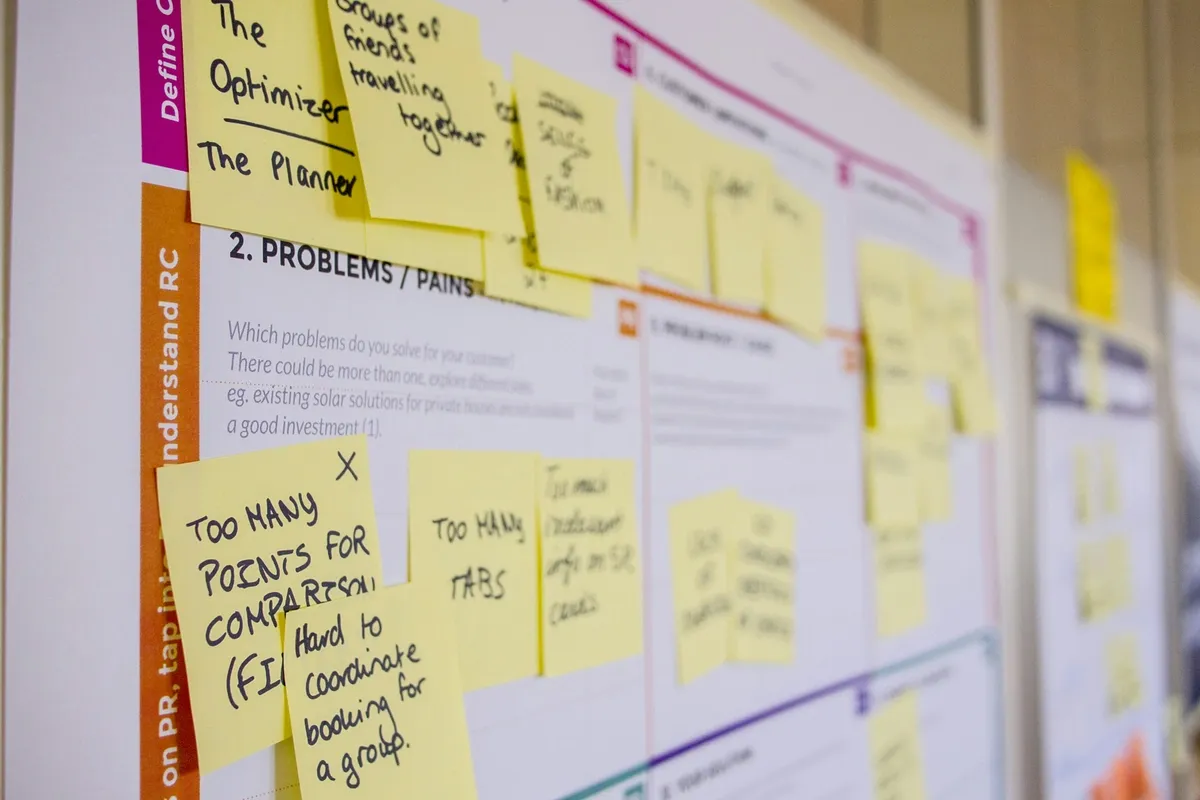
Agile methodology, traditionally a cornerstone of software development, is increasingly being recognized for its potential to revolutionize architectural project management. By promoting flexibility, enhancing team collaboration, and ensuring timely project delivery, Agile offers architecture firms a fresh approach to optimizing project workflows. This integration of Agile principles into architectural practices can yield significant improvements in design iterations, client satisfaction, and overall project efficiency.
Understanding Agile Methodology
Agile methodology is a dynamic project management approach that emphasizes flexibility, collaboration, and customer satisfaction. Originating in the software development industry, Agile’s core principles revolve around iterative development, where requirements and solutions evolve through the collaborative efforts of self-organizing and cross-functional teams.
Core Principles of Agile
- Customer Collaboration Over Contract Negotiation: Agile prioritizes ongoing collaboration with customers and stakeholders to ensure the final product meets or exceeds their expectations (source).
- Individuals and Interactions Over Processes and Tools: Recognizing that people and their interactions are the primary drivers of project success, Agile emphasizes the importance of team dynamics and communication (source).
- Working Solutions Over Comprehensive Documentation: Agile values delivering functional solutions over extensive documentation, ensuring that the primary focus is on creating value (source).
- Responding to Change Over Following a Plan: Agile methodologies accept and adapt to changing requirements, even late in the development process, promoting a flexible approach to project management (source).
Overview of Agile’s Benefits in Project Management
Agile methodology offers numerous benefits, particularly in enhancing project management efficiency and effectiveness:
- Accelerated Delivery: Agile breaks projects into manageable iterations, enabling quicker delivery of valuable features (source).
- Enhanced Quality: Regular testing and continuous integration help identify and resolve issues early, leading to higher-quality outcomes (source).
- Elevated Customer Satisfaction: Agile’s customer-centric approach ensures that the final product aligns closely with customer needs and expectations (source).
- Greater Flexibility: Agile teams can quickly pivot to address new priorities or changing market conditions, making them more adaptable to unforeseen challenges (source).
- Improved Team Collaboration: Agile fosters a collaborative environment that enhances communication and teamwork among diverse groups (source).
Brief History of Agile in Software Development and Its Success
The history of Agile methodology dates back to the early 2000s, with its formal introduction through the Agile Manifesto. Here’s a brief timeline:
- 1970s – Waterfall Model: The Waterfall model’s sequential approach was the dominant methodology but struggled with adapting to changes, often resulting in project delays (source).
- 1980s – Iterative and Incremental Development: The industry began exploring iterative and incremental methodologies that allowed for gradual improvements and adaptability (source).
- 1990s – Introduction of Scrum: The Scrum framework emerged, emphasizing teamwork, regular feedback, and the ability to adapt to changing requirements (source).
- Late 1990s – Extreme Programming (XP): XP introduced practices like pair programming and test-driven development, further refining Agile approaches (source).
- 2001 – Agile Manifesto: The Agile Manifesto, created by leading developers, solidified the core values and principles of Agile methodologies (source).
Agile’s success in the software industry is largely attributed to its ability to deliver high-quality products quickly and efficiently while maintaining a high degree of customer satisfaction. The emphasis on iterative development and flexibility allows Agile teams to respond rapidly to changes, making it a highly effective project management approach.
Adapting Agile for Architectural Projects
Adapting Agile methodology to architectural projects requires a nuanced approach due to the inherent differences between software development and architecture. While software development often deals with intangible deliverables that can be iterated upon easily, architecture involves physical structures where changes can be costly and logistically challenging. Here’s how architecture firms can tailor Agile practices to fit their unique needs.
Key Differences Between Software Development and Architecture
- Nature of Deliverables:
- Software Development: Deliverables are intangible and can be updated frequently.
-
Architecture: Deliverables are physical structures, making post-construction changes expensive and complex.
-
Iteration Capability:
- Software Development: Continuous testing and iteration are feasible.
-
Architecture: Iterations are more feasible in the design phase; construction phases require rigid planning.
-
Stakeholder Involvement:
- Software Development: Regular stakeholder feedback is incorporated throughout the development process.
-
Architecture: Stakeholder input is critical during key milestones but may be less frequent during day-to-day progress.
-
Risk Management:
- Software Development: Agile helps manage risks through short sprints and regular feedback loops (source).
- Architecture: Detailed planning and compliance with regulations are crucial, making frequent changes more complex.
Steps to Tailor Agile Practices for Architecture Firms
- Define Clear Phases:
-
Combine Agile’s iterative approach with architecture’s phased process. Divide projects into stages: conceptual design, schematic design, detailed design, construction documentation, and construction.
-
Employ Iterative Design Techniques:
-
Use Agile’s iterative cycles during the design phases. Create multiple design iterations, gather client feedback, and refine designs in cycles to identify and address potential issues early (source).
-
Cross-functional Teams:
-
Form cross-functional teams including architects, engineers, and key stakeholders to promote collaboration and quick decision-making, mirroring Agile’s team structure.
-
Frequent Client Reviews:
-
Schedule regular client reviews during the design phase to gather feedback and make necessary adjustments before finalizing designs, similar to Agile’s sprint reviews.
-
Flexible Planning:
-
Allow flexibility in the design phases while maintaining rigid planning during construction. Develop adaptable roadmaps that accommodate changes without compromising timelines and budgets.
-
Use Digital Tools:
- Leverage digital tools like Building Information Modeling (BIM) to visualize iterations and manage project data effectively, simulating changes before construction begins.
Case Studies of Architecture Firms Using Agile
- Case Study: XYZ Architecture Firm:
- Approach: XYZ implemented Agile by breaking down the design phase into sprints and using BIM software for iterative models and bi-weekly client meetings.
-
Outcome: Reduced design errors by 20% and decreased project timelines by 15%, with improved client satisfaction due to frequent, transparent communication.
-
Case Study: ABC Design Studio:
- Approach: ABC adopted Agile by forming cross-functional teams and using Kanban boards to visualize tasks and progress, ensuring alignment among team members.
- Outcome: Smoother workflows and quicker decision-making processes led to timely project completion with fewer revisions needed during construction.
By carefully adapting Agile practices, architecture firms can enhance flexibility, improve team collaboration, and ensure timely project delivery, ultimately leading to better project outcomes and increased client satisfaction.
Benefits of Agile in Architectural Project Management
Enhanced Flexibility in Project Workflows and Design Iterations
Agile methodologies inherently support flexibility, which is crucial for the dynamic environment of architectural projects. Unlike traditional project management approaches such as the Waterfall model, Agile allows for iterative cycles or sprints. This means that teams can continuously refine and improve designs based on ongoing feedback and changes in project requirements. For instance, Agile allows clients to make small objective changes without large amendments to the budget or schedule, ultimately improving client satisfaction (source). The iterative nature of Agile encourages frequent reassessment and adaptation, which can lead to more innovative and responsive design solutions.
Improved Team Collaboration and Communication
Agile methodologies emphasize the importance of collaboration and communication within teams. The Agile Manifesto highlights values such as “individuals and interactions over processes and tools” and “customer collaboration over contract negotiation” (source). Daily stand-up meetings, sprint reviews, and retrospectives are integral practices in Agile that ensure continuous communication and feedback among team members and stakeholders. This collaborative environment helps identify and resolve issues more quickly, fostering a more cohesive and productive team dynamic. For architecture firms, this means that architects, engineers, and clients can work more closely together to ensure that the project meets all stakeholders’ needs and expectations.
Timely Project Delivery and Better Client Satisfaction
One of the most significant benefits of Agile is its focus on delivering incremental value through iterative cycles. This approach ensures that parts of the project are completed and reviewed regularly, leading to more timely project deliveries and the ability to make adjustments as needed. According to the State of Agile report, Agile methodologies improve project predictability and optimize delivery times (source). For architectural projects, this can translate to better adherence to timelines and budgets, as well as higher client satisfaction. By involving clients throughout the project lifecycle, Agile ensures that the final product aligns closely with the client’s vision and requirements.
Real-World Metrics or Data Showing Improvements from Agile Implementation
Numerous case studies and industry reports support the efficacy of Agile in improving project outcomes. For example, the State of Agile report highlights that 95% of organizations practicing Agile reported benefits such as improved project visibility and better team morale (source). In the context of architecture and engineering, Agile project management has shown to lower costs, increase profits, and enhance client satisfaction by allowing for more effective communication and iterative development (source). These metrics underscore the potential for Agile to transform architectural project management by making it more adaptive, collaborative, and client-focused.
Conclusion
Implementing Agile methodology in architectural project management offers numerous benefits, including enhanced flexibility, improved collaboration, timely project deliveries, and better client satisfaction. By adopting Agile, architecture firms can ensure that they remain competitive and responsive to the evolving needs of their clients.
Minute7 supports architecture firms in their Agile journey by providing a robust time tracking and expense reporting solution that integrates seamlessly with QuickBooks. This ensures that your project management processes are not only efficient but also well-documented and financially transparent. Whether you are a freelancer or part of a larger enterprise, Minute7 helps you keep track of project progress, manage expenses, and deliver exceptional results to your clients.
For more information on how Minute7 can assist your firm in implementing Agile methodologies, visit Minute7.
Embracing Agile for a Competitive Edge
Implementing Agile methodology in architectural project management offers numerous benefits, including enhanced flexibility, improved collaboration, timely project deliveries, and better client satisfaction. By adopting Agile, architecture firms can ensure that they remain competitive and responsive to the evolving needs of their clients.
Minute7 supports architecture firms in their Agile journey by providing a robust time tracking and expense reporting solution that integrates seamlessly with QuickBooks. This ensures that your project management processes are not only efficient but also well-documented and financially transparent. Whether you are a freelancer or part of a larger enterprise, Minute7 helps you keep track of project progress, manage expenses, and deliver exceptional results to your clients.
For more information on how Minute7 can assist your firm in implementing Agile methodologies, visit Minute7.



